
REAL-TIME RENDERING
Zury leverages their background in computer science (Northwestern University, 2020) to create moving images that are reactive - rendered in real time.
The beast, the mother, & the kid
For the latest piece by the experimental theatre company aethaus, Zury was tasked with creating a digital version of a physical mask worn by the players. The footage of players wearing this digital mask would be displayed on stage while the players were performing. At times, the mask needed to match the players movements precisely, and at others, it needed to transform and appear to glitch wildly.
To achieve this, Zury used 3D photo-scanning, TouchDesigner, and the MediaPipe module.
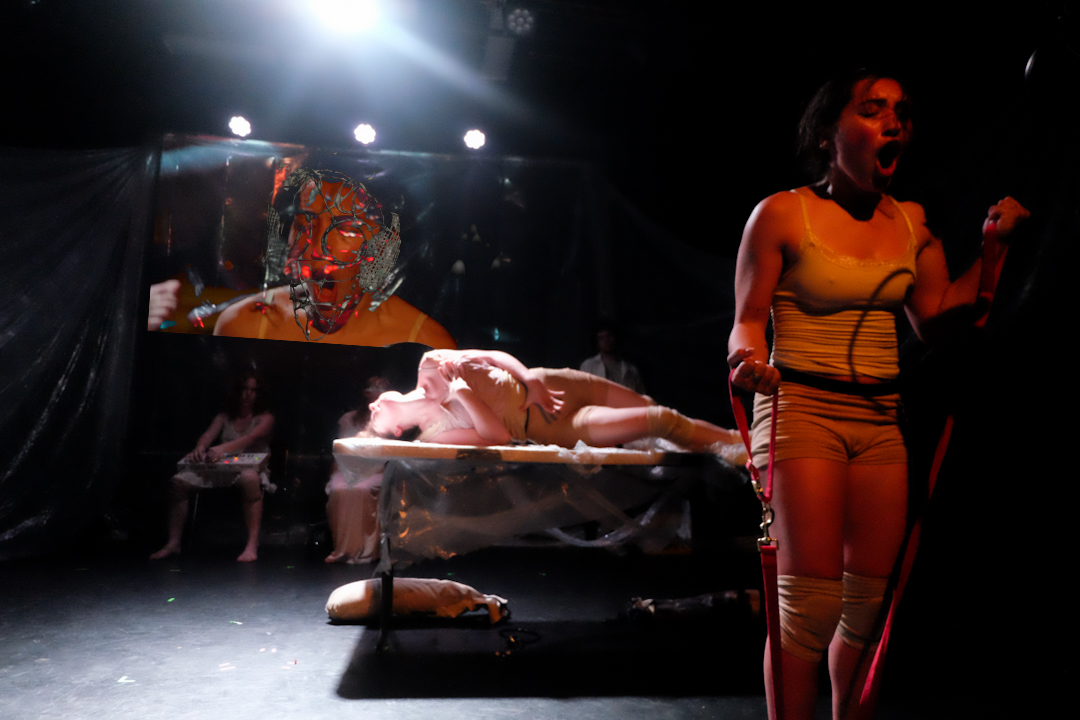

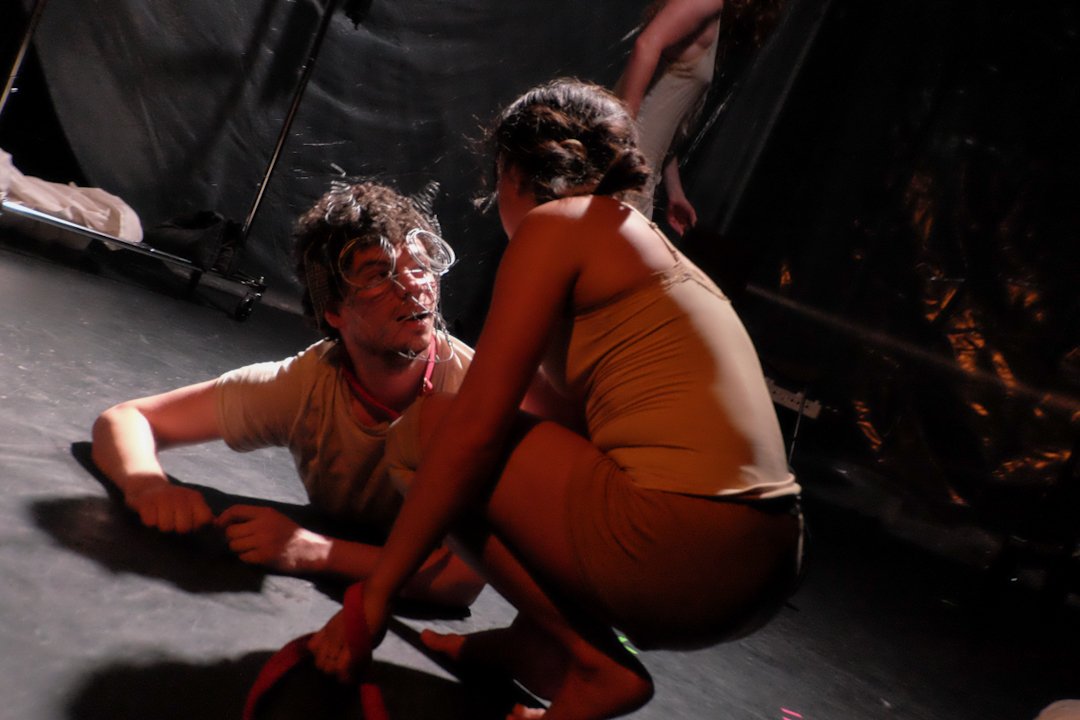

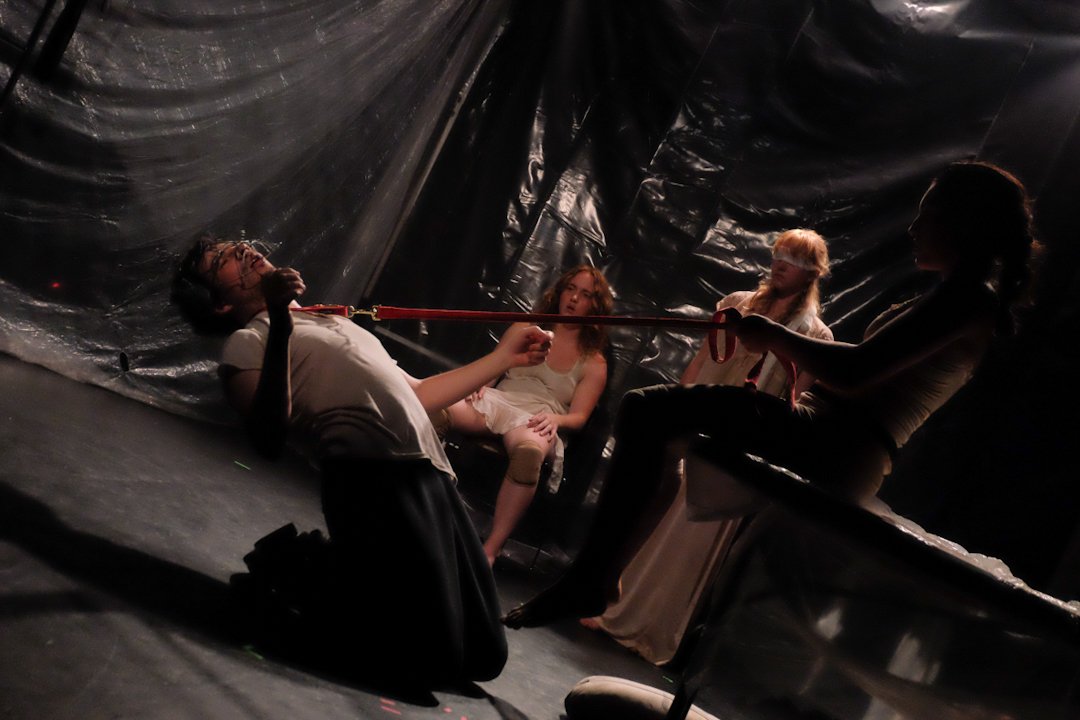




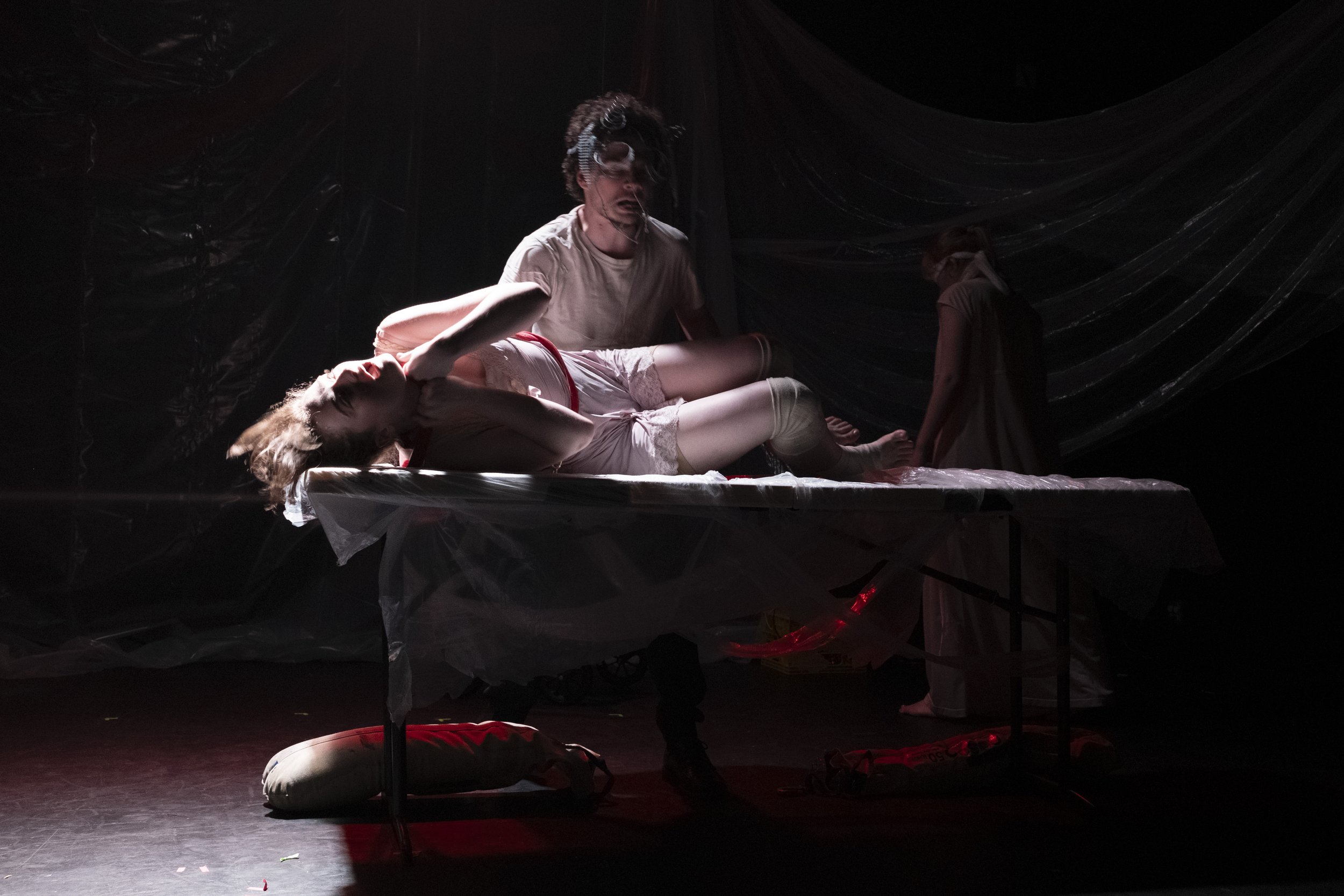

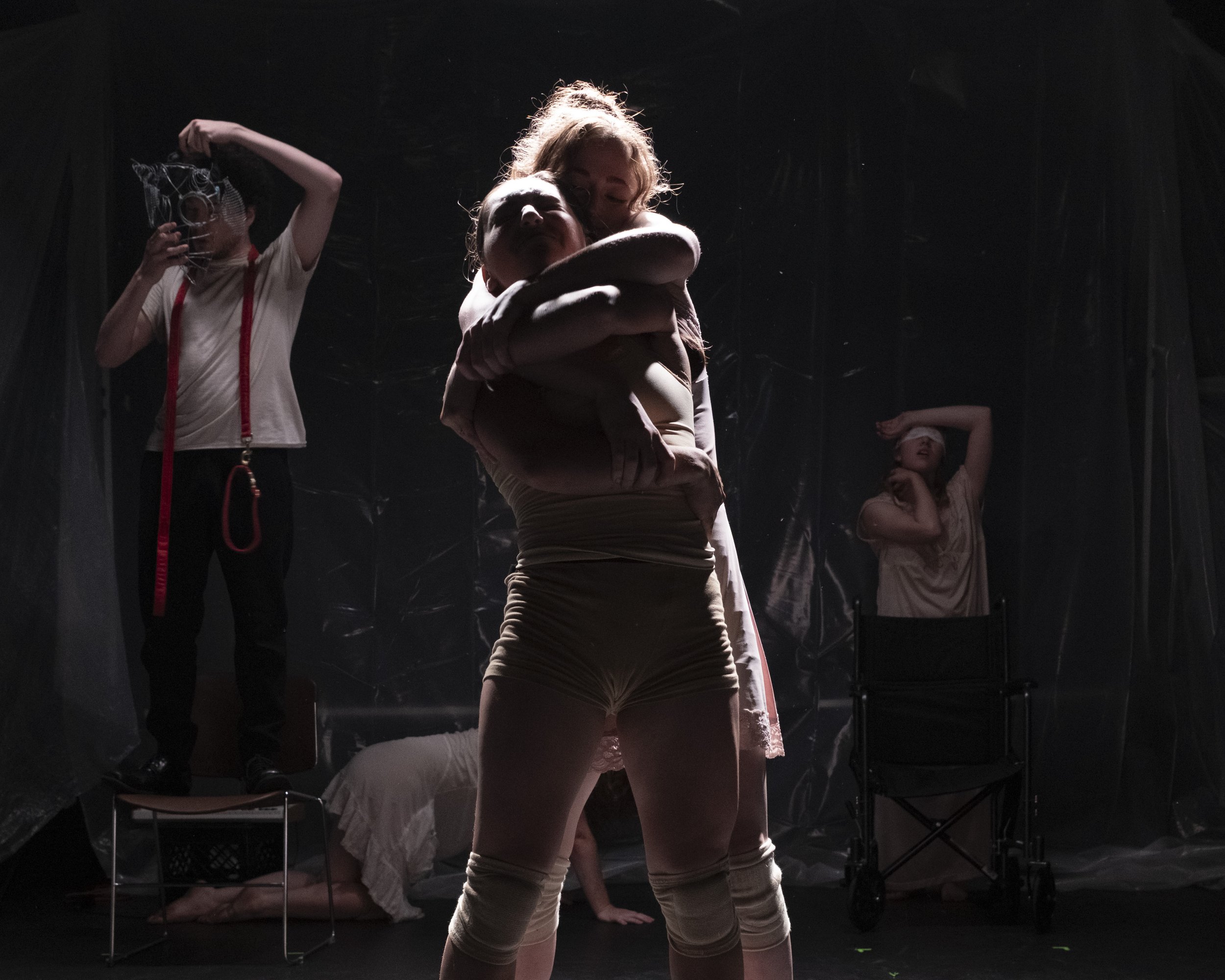
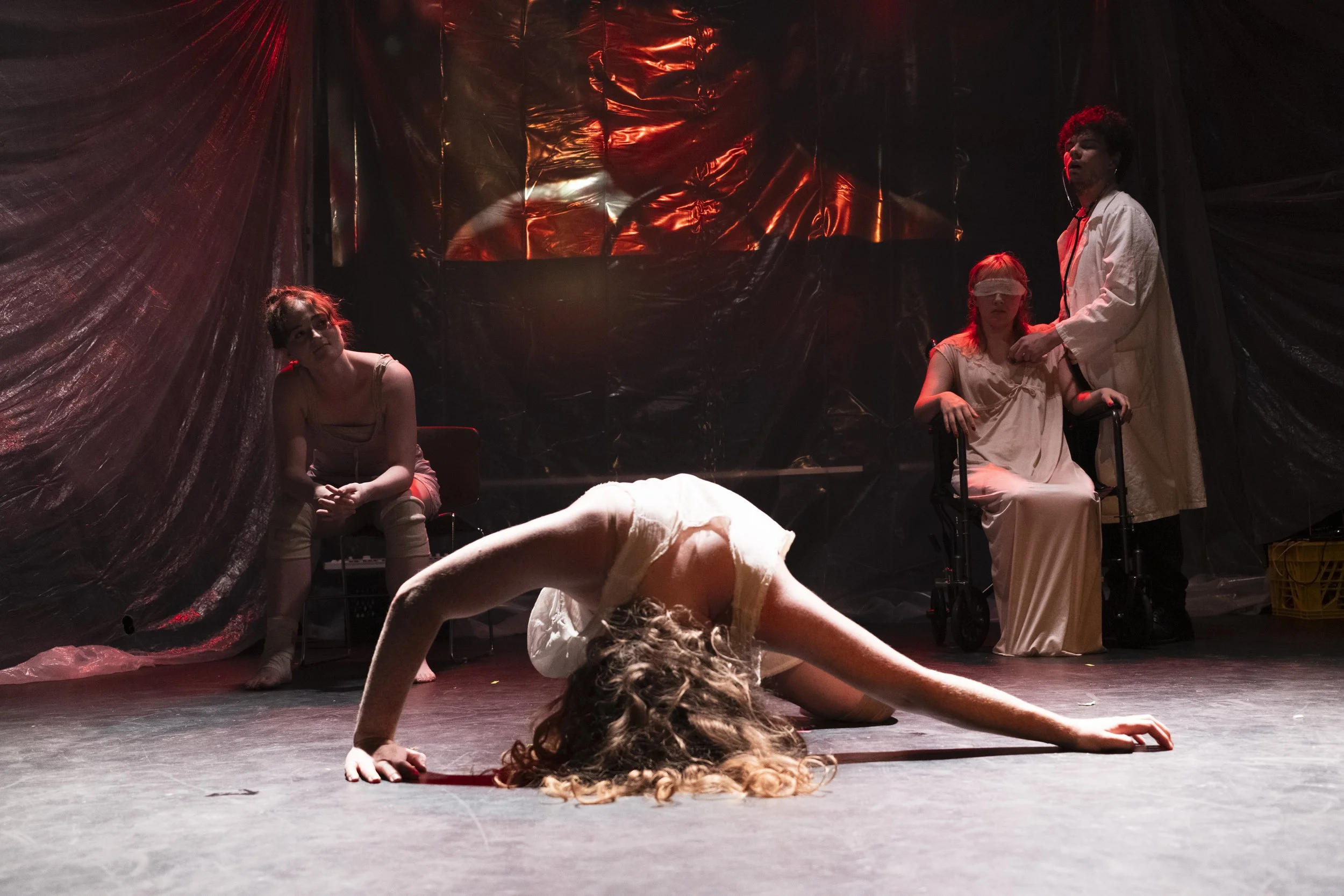

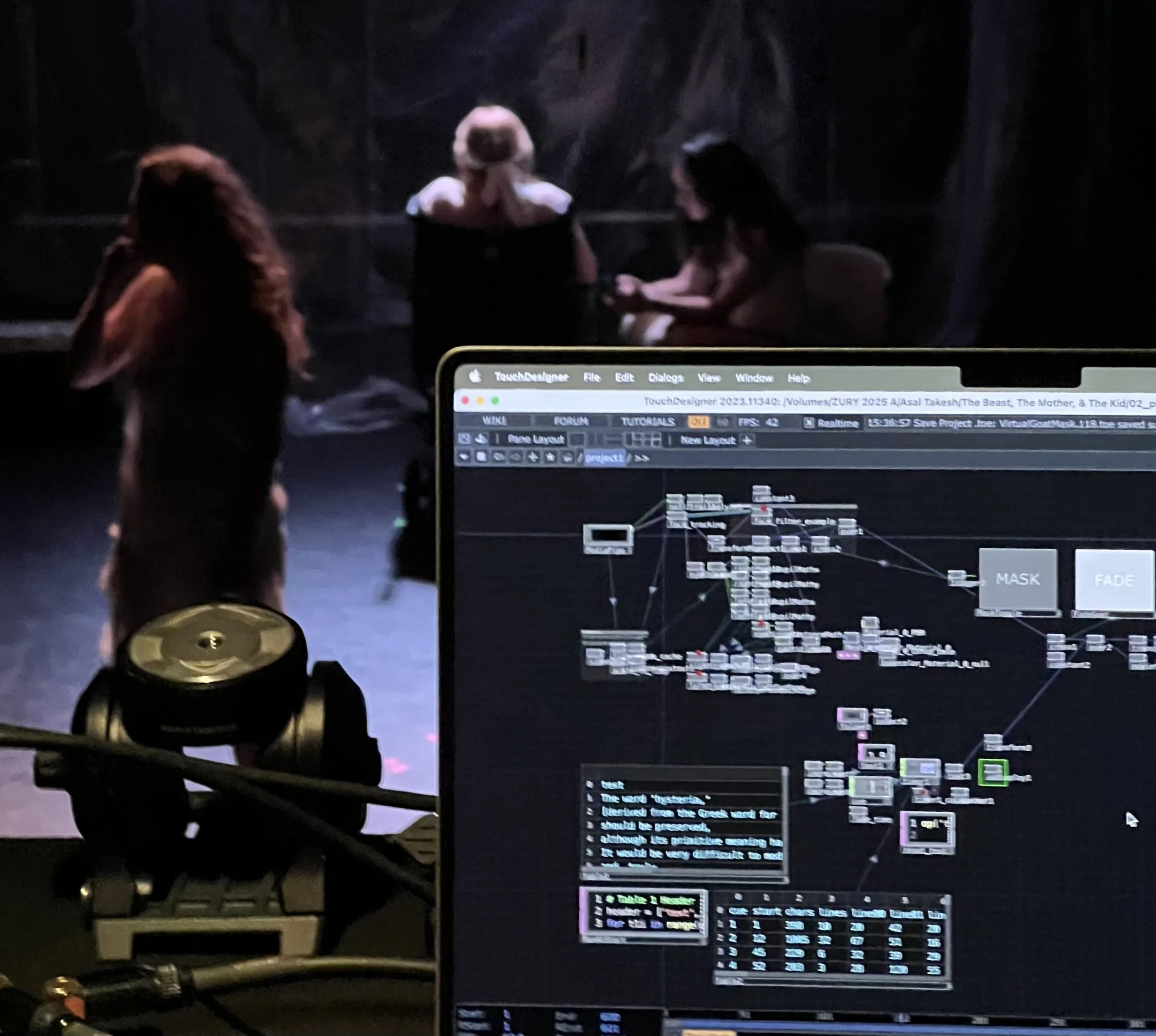
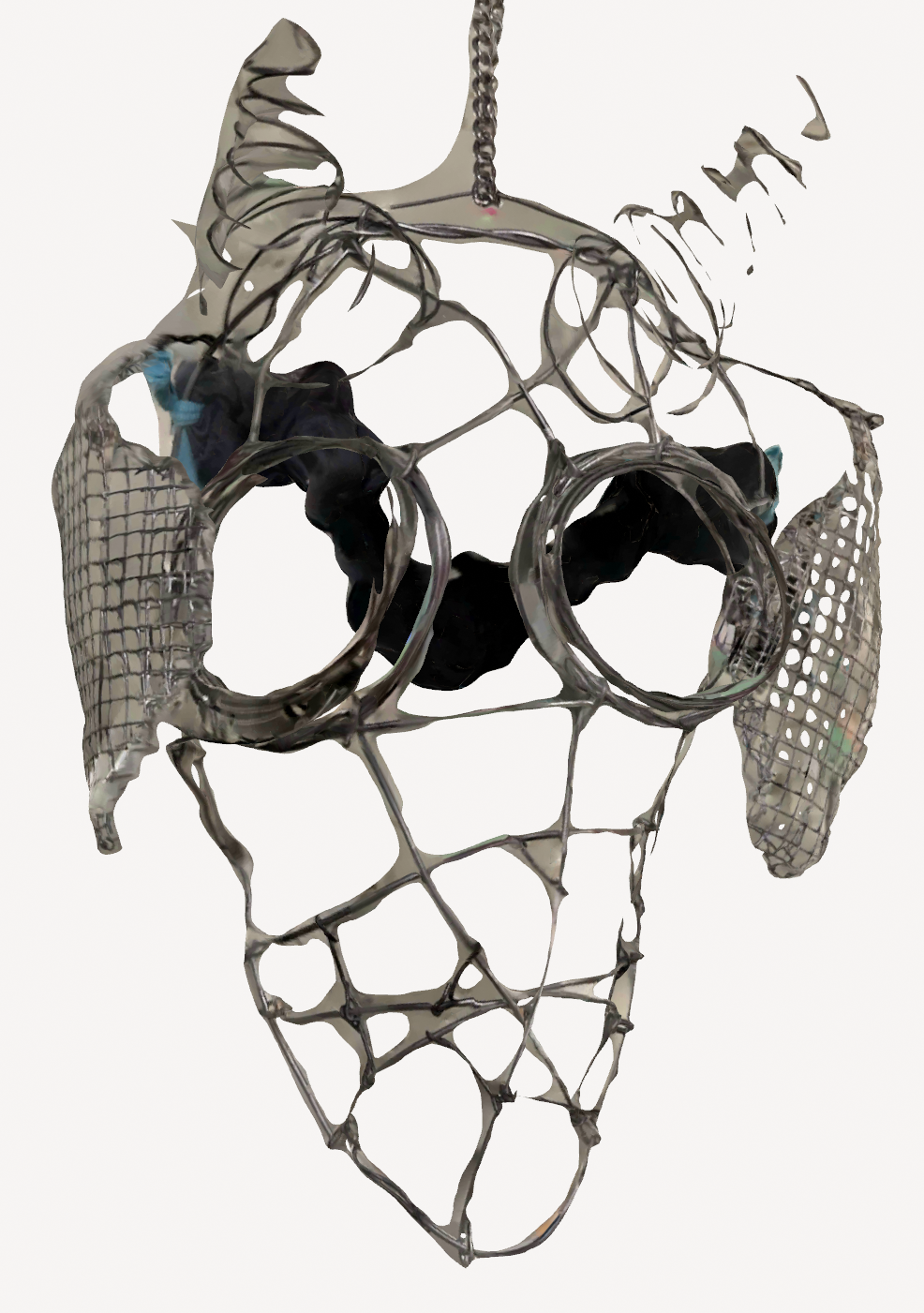

abstract dance visualizer
For an ecstatic dance event series , Zury was tasked with creating projection visuals which emphasized the energy of the space, without giving anyone the ability to focus too much on their appearance. Within this framework, Zury created an abstract representation of the crowd which legibly mimics their movements, but is designed to be fully anonymous and lacking in details like a well-defined body shape.
To achieve this, Zury used TouchDesigner and the MediaPipe module.

abstract dance visualizer
For a local DJ , Zury was tasked with creating projection visuals which emphasized the music, without being overly distracting. The artist specifically wanted something “Clean, trippy, sexy, and where the screen was mostly black most of the time.” Within this framework, Zury created an abstract representation flowing metal which reacts to the music in real time, following the hi-hats, kick, snare, and loudest frequencies at a given moment in the show.
To achieve this, Zury used TouchDesigner.

Computational videography
Zury leverages their background in computer science (Northwestern University, 2020) to create moving images that would not be possible to create with traditional tools.
Dropped Frame Interpolator
On the award-winning web-series ‘Dead Enders’, Zury was tasked with finding a way to generate temporally consistent frames of video to fill in gaps where frames had been dropped during the recording process due to an overheating camera.
To do this, Zury wrote custom software to find, catalog, and remove repeated frames, split the resulting sequence into sections, processed them with traditional frame interpolation techniques, and intelligently substituted the newly generated frames into the original footage.
Before
After
